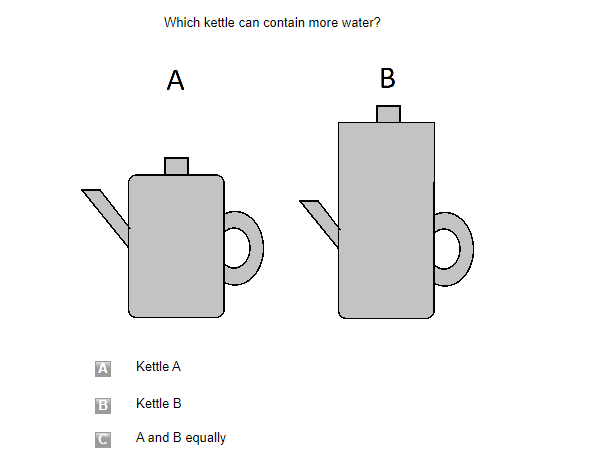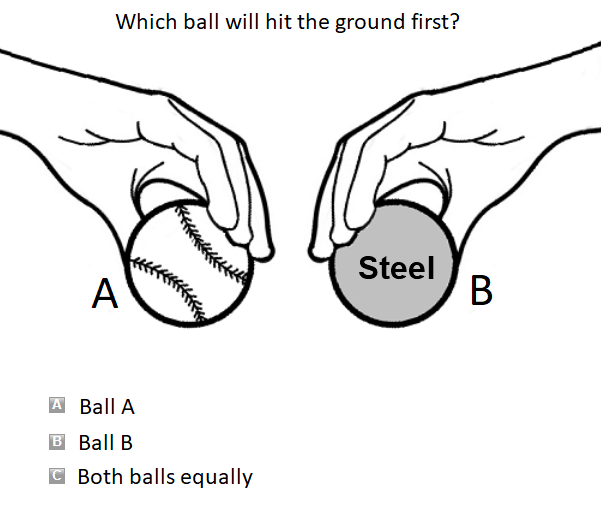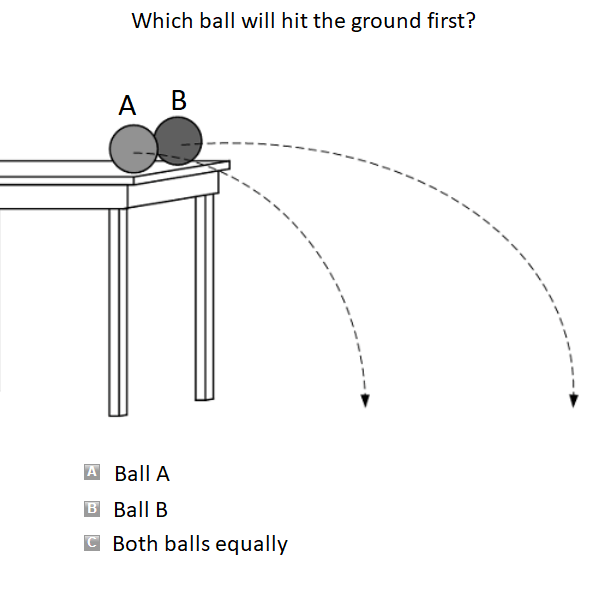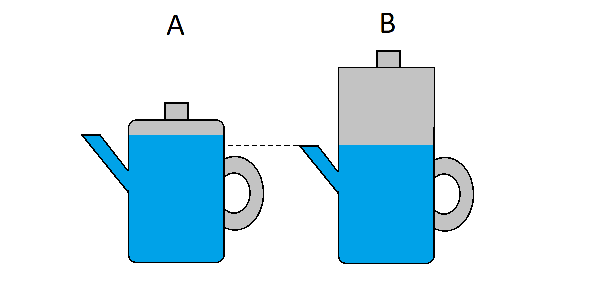 Master the WTMA Exam with Confidence – Unlock Expert Strategies & Proven Results!
Master the WTMA Exam with Confidence – Unlock Expert Strategies & Proven Results!
Trusted by over 10,000 Job Seekers
Last Updated: February 12, 2025
Feeling overwhelmed by the WTMA exam? Our expert-designed study tools are your shortcut to success. With real exam simulations, targeted practice questions, and actionable insights, you'll quickly transform your preparation into confident performance. Join thousands of successful candidates who have boosted their scores and advanced their careers. It’s time to conquer the WTMA—start your journey to exam success today!
The Wiesen Test of Mechanical Aptitude (aka Wiesen Technical Assessment) assesses your ability to learn to use and maintain equipment and machinery. The test includes 60 multiple-choice questions with a 30-minute time limit.
The 60 questions cover various topics such as forces and torque, acceleration, fluid mechanics, etc. The score indicates how many questions (out of 60) the individual answered correctly.
The main challenges of this test are the variety of topics, the limited time for each question, and preparing oneself with the right practice plan to ensure success on the test.
For 30 years, we've specialized in building & designing the best practices for test preparation, providing a platform that mimics the real test environment & experience.
If your upcoming test is important, we strongly recommend investing in our proven test preparation. It's affordable and comes with a money-back guarantee.
Click the GET STARTED NOW button to access the complete preparation materials or keep reading to see a full overview of the assessments or practice for free here.
- A Wiesen Diagnostic Test
- 18 Subject-Specific Practice Tests
- A Full-Length Wiesen Test Simulation
- A Comprehensive Mechanical Aptitude Study Guide
- Fully detailed explanations for each question
Read the rest of this guide to understand everything to know about the test (Use these links to navigate directly to the appropriate section on this page) :
Table of Contents
1. Overview of the wtma test structure and format
2. What kind of questions to expect
3. Sample Questions, including answers and explanations
4. Tips for best preparation - no matter how much time is left
What Is the Wiesen Mechanical Aptitude Test? (Overview)
The Wiesen Mechanical Aptitude Test (WTMA) is a short and very popular mechanical aptitude test. The test contains 60 multiple-choice questions to be answered in 30 minutes.
The questions on the assessment are designed to measure your ability to operate, maintain, install, and repair equipment and machinery.
This mechanical test covers different subjects of mechanics, such as forces, levers, velocity, fluids, etc.
The WTMA test was created by Criteria Corp., the company that administers one of the world's most common pre-employment tests - the CCAT.
What Does the Wiesen Assessment Look Like?
As noted earlier, on the test, there are 60 multi-choice questions.
The questions in these mechanical aptitude tests will usually contain one or more images and a multiple-choice question with 3-4 possible answers.
In most cases, you don't need calculation to solve the question in mechanical reasoning, just common sense and some previous knowledge of fundamental physics.
Each of the 60 questions on the Wiesen Test is formatted in the following manner:

The questions on the Wiesen Mechanical Aptitude Test deal mainly with the following topics:
- Fluids
- Optics, Acoustics and Thermodynamics
- Force and Torque - Levers
- Force and Torque - Equilibrium
- Velocity - Acceleration and Gravity
- Velocity - Rotation
- Pulleys
- Wheels
- Gears
- Electricity
You can find some sample questions further down the page.
This short video is our quick overview of the test and questions types:
The Score System on This Assessment
There are two types of scores: a raw score and a percentile score.
#1 The raw score indicates how many questions (out of 60) the individual answered correctly; for example, a score of 50 means the individual answered 50 questions correctly.
#2 The percentile score ranks the individual compared to other candidates; for example, an 80% score means that the individual is in the top 20%, outranking 80% of the other candidates.
High scores and success on the Wiesen Assessment indicate that the individual can learn how to operate, maintain, install, and repair equipment.
What Score Do You Need to Pass the Wiesen Test of Mechanical Aptitude?
The answer depends on the position to which you applied. Here are the typical passing scores for various professions:
| Job Title | Passing Score (Out of 60) |
| Electrician | 47 |
| Forklift Operator | 44 |
| Manufacturing and Production | 43 |
| Materials Handler | 40 |
| Mechanic / Maintenance | 46 |
| Oil Services Worker | 45 |
| Sales | 46 |
| Service Technician | 46 |
| Utility Worker | 42 |
| Warehouse | 46 |
However, note that this is the lowest acceptable raw score for the position. In the end, you will need to compete with other applicants for the job, and only those with the highest score will move on to the next stage of the hiring process.
What Are the Main Challenges of the Wiesen Technical Assessment?
The Wiesen Test of Mechanical Aptitude has several characteristics that make it challenging for test-takers. Let's explain them and give some tips for overcoming them.
#1 – Little Time to Prepare
That is one of the main challenges of Wiesen test-takers. From our experience, many candidates have a narrow window of opportunity to prepare for the assessment.
So to ensure you can prepare on such short notice, your practice must be focused and effective with high confidence that you are practicing with the most accurate preparation test so you don't waste your time.
#2 – A Variety of Questions
The questions on the Wiesen Test can be highly creative and cover a virtually infinite set of subjects. From pots to fishing rods, broomsticks to toasters, towels to stools, and lots more.
That makes it nearly impossible to memorize scenarios and increases stress and uncertainty.
#3 – The Trap of Intuition
The WTMA test tends to incorporate everyday objects in its questions, like furniture, home appliances, and working tools.
Although helpful in many cases, that strategy also tends to create a false feeling of familiarity among test-takers, who give an intuition-based answer and often go wrong.
Take a look at this Wiesen test sample question:
Sample Question 1

Our Practice Plan For Effective Use of Your Short Time
To get well prepared for the Wiesen Mechanical Test, you must address the three challenges:
- A plan for effectively using your time to preparing
- Keep focus while there are a variety of questions
- The trap of Answering from Intuition
Let’s observe each of them:
#1 – Practice Effectively to Overcome the Short Preparation Time
Here's your 3-day plan to ace the test (you can also go through all the steps mentioned in one day if you wish)
Day 1 – Diagnostic Test and Big Topics
First, you will need to understand your weakest areas so your practice is personalized and effective. It would be best if you also correlated it with "big topics" (such as mechanical concepts and mechanical principles that are more common on the Wiesen Test) and "small Topics" (less common).
For that, you will take a 45-question, 22-minute Wiesen Diagnostic Test.
You will then start practicing the big topics based on your performance:
- Force and Torque
- Velocity - Acceleration and Gravity
- Optics, Acoustics, and Thermodynamics
Here's a section of the personalized test report you will get once you complete the test. This report will allow you to focus your effort on these areas.
Day 2 – More Big Topics and Some Small Ones
This day will focus on taking practice tests by the subject.
You will keep practicing the big topics, as well as smaller topics like:
- Velocity - Rotation
- Wheels
- Pulleys
Focus on the areas you found weaker in the diagnostic test.
Day 3 – Complete the Practice and Take a Full-Length Simulation
The day before the exam is the final day to complete the practice tests and, most importantly, take a full-length simulation of the Wiesen Test of Mechanical Aptitude.
You will go over additional practice tests (as much as time allows), in the smaller areas of the test, such as:
- Gears
- Electricity
After completing all the practice tests on the PrepPack, finish by taking a full-length simulation to get familiar with the test format and time constraints.
#2 and #3 – Learn Mechanical Reasoning to Overcome Variety and Intuition Trap
Whenever you encounter a question on the Wiesen test or any other mechanical aptitude test, you should ask yourself the mother of all questions:
What is the underlying physical principle behind this question?
Asking this simple question every time will help you solve ANY mechanical aptitude question, even if you've never seen it before. Understanding the physical explanation behind everyday scenarios will also help you avoid falling into the trap of intuition.
To achieve that, ensure you thoroughly read the explanations for every question, even if you got it right.
Here are two final Wiesen Test sample questions to explore & understand basic physical principles:
Sample Question 2

Now look at this variation of the same principle:
Sample Question 3

The red ball is dropped from the table, whereas the blue ball is pushed forcefully. Which ball will hit the ground first now?
Our Recommendation for You - Risk-Free
How to best prepare yourself for success on the test? The best recommendation is to practice all the different subjects you will face on the test.
If you have a job assessment test, it means that you have an opportunity to get accepted or promoted by a company or an institute.
If you want to properly prepare yourself with our 350+ questions, including answers & detailed explanations, this is what we offer:
- Access our prep test platform to practice from any device whenever you want.
- Price is an affordable one-time payment including our Money Back Guarantee for 100% Customer Satisfaction
- Dedicated Customer Support Service.
- Our system provides feedback on practice tests and quizzes, allowing you to quickly identify areas where you need more practice.
The Wiesen Prep Including 3 Main Sections:
#1 Diagnostic Test (to quickly expirence the various question type and get a better understanding of where you want to focus (specailly if you are tight on schedule)
#2 Practice divided by specific subjects - this main section includes 18 practice tests covering all subjects you need to practice
#3 Full-Length Simulation - a 60 question timed with 30 minutes to give you the full experience.
You can repeat each test as much as you want, and inside any test, you can skip and be as flexible as you need to quickly go over all tests and questions you want to practice.
This preparation is packed with a lot of questions, so feel free to practice them, but what you can expect after practicing for your first 30 minutes is that your mind will get sharper. You will gain more confidence by practicing to increase your actual exam score and (as we wish you) also pass the assessment with lots of success.
FAQ
The Wiesen Mechanical Aptitude Test (WMAT) is not a difficult test, and the questions can be quite straightforward. However, with only thirty minutes to answer sixty questions on a variety of topics, some of them can be tricky you can easily get them wrong. Taking the time to prepare with the right practice tests and study guides can make all the difference. Proper preparation can help you become a top performer, rather than receiving a negative result.
The passing score for the Wiesen Test of Mechanical Aptitude (WTMA) is determined by the individual or organization administering the test. On this section of this page, we give a range of scores for some positions, so you can get an impression of the score you need to aim for.
This page explores a few questions and provides the mechanical aptitude test answers with clear explanations. In our PrePack, there are over 350 questions and answers, each accompanied by an explanation.
Summary
To ace the Wiesen Test of Mechanical Aptitude, you need to have a plan. Practice in a focused and extensive manner, and ensure you understand the underlying physical principles behind the questions.
This strategy will allow you to overcome both the short time you must prepare and the variety and complexity of questions you may be asked.



